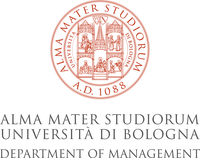
PUBLIC SERVICE ACCOUNTING AND ACCOUNTABILITY GROUP (PSAAG) 2023
ANNUAL WORKSHOP 2023
& EARLY CAREER COLLOQUIUM
Bologna
30/11/2023-01/12/2023
University of Bologna - Department of Management
WORKSHOP MAIN THEME
In recent years, public sector organizations have been encouraged to implement risk management systems, also as part of New Public Management reforms (Arena, Arnaboldi, & Azzone, 2010; Bracci, Tallaki, Gobbo, & Papi, 2021; Power, 2017). These systems involve the identification, assessment and control of both strategic and operational risks and the development of new technologies and artifacts, such as risk-maps, risk-registers, internal control procedures.
Formal risk management approaches are not necessarily widespread and established everywhere. Moreover, public organizations exhibit significant variation in the types of risks they assess, the methods they use to manage them, and how they perceive and describe risks. This discrepancy creates a tension between the desire to impose standardized risk management systems (for example at the policy and country level, e.g., EC, 2014) and the need to allow field actors to develop control systems based on their specific operational needs.
At the core of current risk management approaches is the idea that all risk can be “managed”.
Yet, the occurrence of various crises, both fast- and slow-burning, such as the subprime crisis, deteriorating public finances, the COVID-19 pandemic, the climate crisis and cybersecurity threats have exposed public organizations to new vulnerabilities and highlighted the significant uncertainty and unpredictability of future adverse events. Power underlined the inherent fragility of formal risk management systems, that while provide confidence that risks are under control, they lower the capacity to detect and manage unforeseen risks (Power, 2004, 2009). The interaction between vernacular and formal risk management systems is considered crucial to allow robustness as well as flexibility in managing risks and implementing internal control systems (Carlsson-Wall, Kraus, Meidell, & Tran, 2018).
Not only public organizations are thus increasingly integrating a diverse range of risks into their internal audit and control procedures. The novelty, unpredictability and fast-evolving nature of certain events require public sector organizations to govern an environment embedded with deep uncertainty. Therefore, managing risk may not be sufficient for public sector organization to face such uncertainty, seemingly requiring new ways of conceiving of risks and uncertainty, and of governing them, encompassing not only new tools, but also a change of mindset towards building robustness, resilience (Barbera et al., 2016, 2021, 2023; Steccolini et al., 2017), preparedness to vulnerability (Padovani et al., 2021, 2022), anti-fragility (i.e. the capacity of systems to not only endure but also grow stronger and perform better when exposed to stress, Taleb, 2012) or even “tensegrity” (i.e. the property attributed to objects whose components utilize both tension and compression in a combined manner to provide them with stability and strength; Turnbull and Guthrie, 2019). Managing deep and systemic risks often requires inter-organizational forms of collaboration and cooperation. The management of shared-risk implies new forms of governance and integration of risk management systems in situations such as public-public-partnerships and public-private- partnerships (Bastida, Bracci, & Hoque, 2022; Broadbent, Gill, & Laughlin, 2008).
The disclosure and communication of risks and associated forms of management are another area that deserves interrogation and a deeper understanding (Carnegie, Guthrie, & Martin-Sardesai, 2021). Disclosing and communicating risks is a way to increase accountability, transparency but also support forms of co-production of risk treatment measures with stakeholders and citizens at large.
WORKSHOP STRUCTURE
Following the PSAAG’s workshop tradition, the “lunch-to-lunch” program will be opened each day by a key-note speaker both from academia and practice. The participants will be then organized in breakout sessions dealing with a specific general topic, with an opening by a provocator.
The breakout sessions will address the following sub-themes:
a). Financial resilience between risk and uncertainty
b). Risk management, internal control and accountability
This year the workshop will be opened by an Early Career Colloquium to allow early career researchers to present and discuss their research projects and papers.
EARLY CAREER COLLOQUIUM
The Early Career Colloquium will provide an opportunity for those who have recently embarked on their academic careers to deliver pitches, exchange ideas with fellow early-career scholars as well as more experienced academics, seek feedback, and expand their network of colleagues working in the same research field.
ACADEMIC CHAIRS
Ileana Steccolini, IRSPM chair and University of Essex (UK) & University of Bologna (IT)
Emanuele Padovani, University of Bologna (IT)
Enrico Bracci, University of Ferrara (IT)
LOCAL ORGANIZING COMMITTEE
Federica Bandini, University of Bologna (IT)
Giulia Leoni, University of Bologna (IT)
Luca Mazzara, University of Bologna (IT)
Magalì Fia, University of Bologna (IT)
Paola Canestrini, University of Bologna (IT)
Paolo Ferri, University of Bologna (IT)
Rebecca Orelli, University of Bologna (IT)
Gian Lorenzo Preite, University of Bologna (IT)
